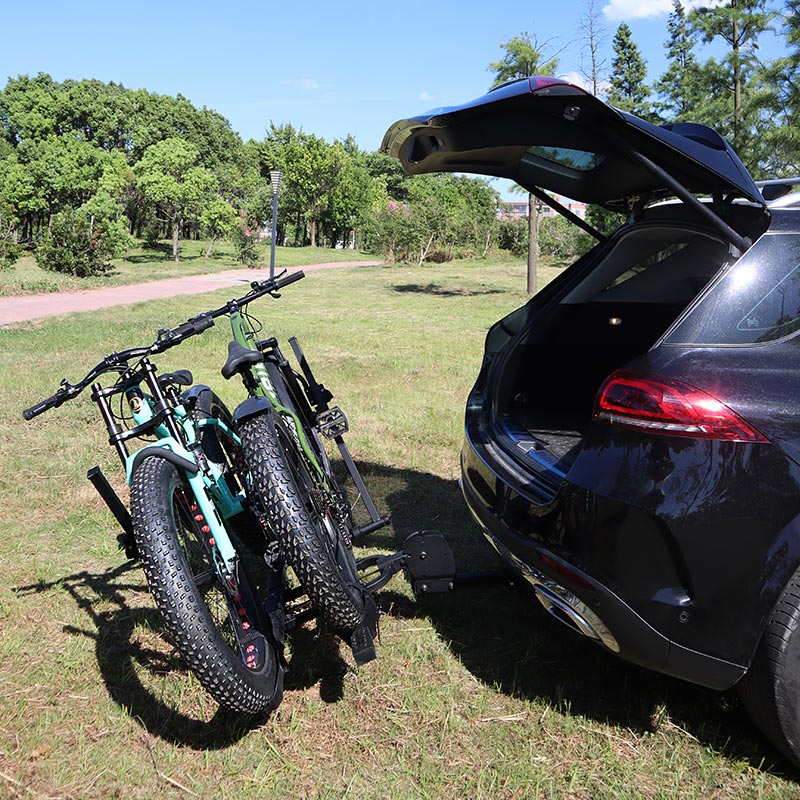Common types of car bike racks
2023-10-18
A car bike rack is a device specifically designed to transport bicycles on the exterior of a vehicle. It allows cyclists to easily and securely transport their bikes to various destinations, such as biking trails, races, or vacation spots. Car bike racks come in different types and configurations to suit different vehicle models and biking needs.
Here are some common types of car bike racks:
1. Roof-Mounted Bike Rack: This type of bike rack is mounted on the roof of the vehicle, typically using a set of crossbars or a dedicated roof rack system. The bikes are secured upright and attached to the rack using clamps or straps. Roof-mounted racks provide easy access to the trunk or rear of the vehicle and do not obstruct the rearview mirror. However, they may increase overall vehicle height and can be less aerodynamic, potentially impacting fuel efficiency.
2. Hitch-Mounted Bike Rack: Hitch-mounted racks are attached to the receiver hitch at the rear of the vehicle. They come in various configurations, including hanging-style and platform-style racks. Hanging-style racks hold the bikes by their frames, while platform-style racks support the bikes by the wheels. Hitch-mounted racks are easy to install and provide convenient access to the rear of the vehicle. However, they require a compatible hitch receiver on the vehicle.
3. Trunk-Mounted Bike Rack: Trunk-mounted racks are strapped or hooked onto the trunk or rear hatch of the vehicle. They are versatile and compatible with a wide range of vehicle models. Trunk-mounted racks are typically lightweight and easy to install, but they may obstruct rear visibility and require proper installation to ensure stability and prevent damage to the vehicle's surface.
When choosing a car bike rack, consider the following factors:
1. Number of Bikes: Determine how many bikes you need to transport regularly. Car bike racks come in various sizes and can accommodate different numbers of bikes, ranging from one to multiple bikes.
2. Bike Compatibility: Ensure that the bike rack is compatible with the type and size of your bikes. Different racks may have weight, frame size, or tire width limitations.
3. Vehicle Compatibility: Consider the type of vehicle you have and its specific features, such as the presence of a hitch receiver, roof rack, or trunk configuration. Choose a bike rack that is compatible with your vehicle model and has the necessary attachment points or accessories.
4. Ease of Use and Security: Look for features that provide easy bike loading and unloading, secure attachment mechanisms, and anti-theft measures to protect your bikes during transportation.
5. Accessibility: Consider how the chosen bike rack will affect access to the trunk or rear of the vehicle. Some racks allow for easy access, while others may require partial or complete removal to access the rear.
It's important to follow the manufacturer's instructions for proper installation and use of the car bike rack. Regularly check and ensure that the rack and bikes are securely attached during transit, and be mindful of any weight or clearance restrictions specified by the vehicle and rack manufacturer.
Additionally, it's recommended to remove the bike rack when not in use to prevent damage to the vehicle and reduce aerodynamic drag, which can impact fuel efficiency.



